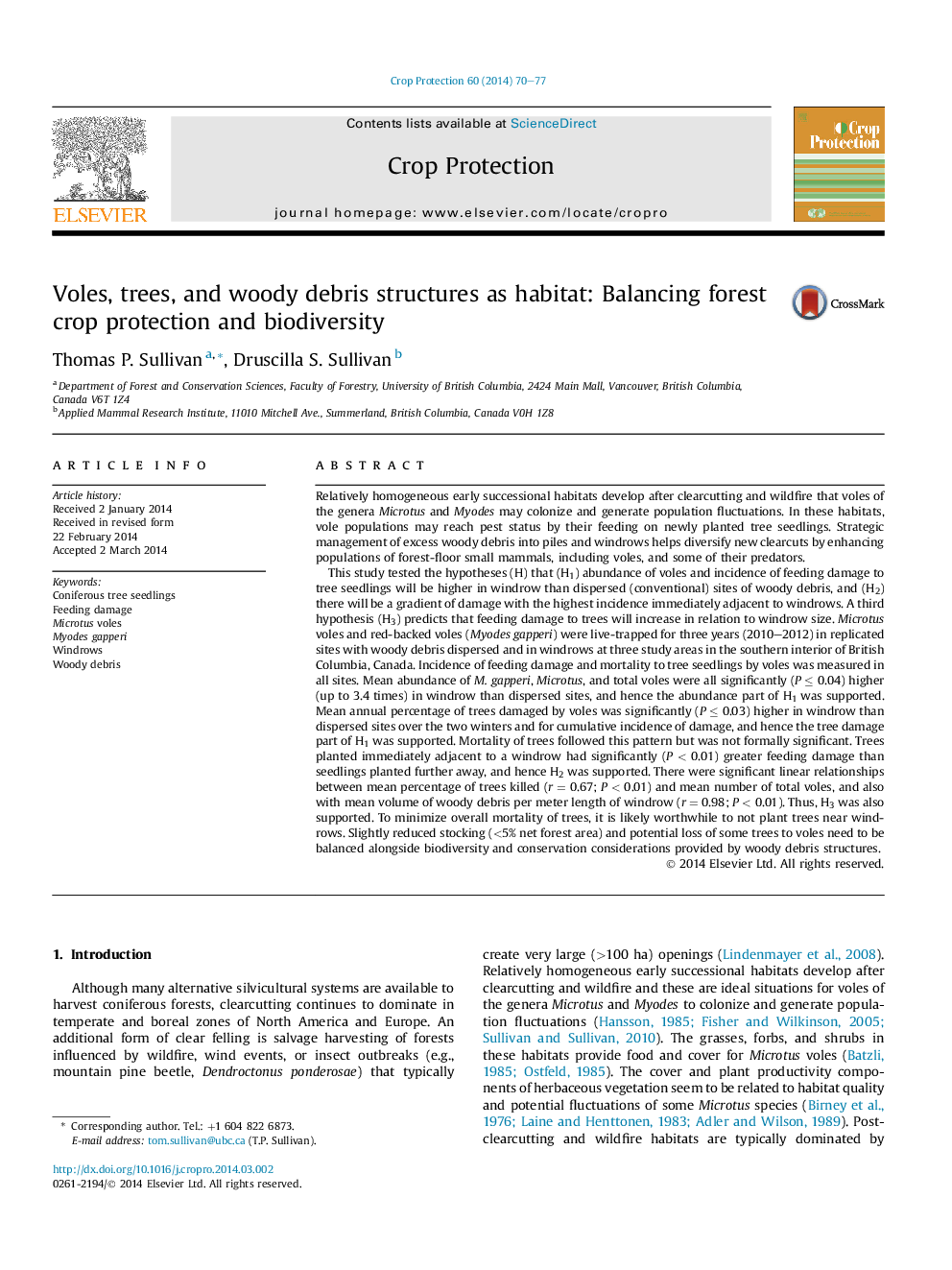| کد مقاله | کد نشریه | سال انتشار | مقاله انگلیسی | نسخه تمام متن |
|---|---|---|---|---|
| 4505870 | 1624327 | 2014 | 8 صفحه PDF | دانلود رایگان |
• Mean abundance of voles higher when woody debris in windrows than dispersed.
• Mean cumulative incidence of trees damaged by voles higher in windrow than dispersed sites.
• Trees planted adjacent to a windrow had greater feeding damage than those planted further away.
• Some tree loss to be balanced by biodiversity and conservation considerations.
Relatively homogeneous early successional habitats develop after clearcutting and wildfire that voles of the genera Microtus and Myodes may colonize and generate population fluctuations. In these habitats, vole populations may reach pest status by their feeding on newly planted tree seedlings. Strategic management of excess woody debris into piles and windrows helps diversify new clearcuts by enhancing populations of forest-floor small mammals, including voles, and some of their predators.This study tested the hypotheses (H) that (H1) abundance of voles and incidence of feeding damage to tree seedlings will be higher in windrow than dispersed (conventional) sites of woody debris, and (H2) there will be a gradient of damage with the highest incidence immediately adjacent to windrows. A third hypothesis (H3) predicts that feeding damage to trees will increase in relation to windrow size. Microtus voles and red-backed voles (Myodes gapperi) were live-trapped for three years (2010–2012) in replicated sites with woody debris dispersed and in windrows at three study areas in the southern interior of British Columbia, Canada. Incidence of feeding damage and mortality to tree seedlings by voles was measured in all sites. Mean abundance of M. gapperi, Microtus, and total voles were all significantly (P ≤ 0.04) higher (up to 3.4 times) in windrow than dispersed sites, and hence the abundance part of H1 was supported. Mean annual percentage of trees damaged by voles was significantly (P ≤ 0.03) higher in windrow than dispersed sites over the two winters and for cumulative incidence of damage, and hence the tree damage part of H1 was supported. Mortality of trees followed this pattern but was not formally significant. Trees planted immediately adjacent to a windrow had significantly (P < 0.01) greater feeding damage than seedlings planted further away, and hence H2 was supported. There were significant linear relationships between mean percentage of trees killed (r = 0.67; P < 0.01) and mean number of total voles, and also with mean volume of woody debris per meter length of windrow (r = 0.98; P < 0.01). Thus, H3 was also supported. To minimize overall mortality of trees, it is likely worthwhile to not plant trees near windrows. Slightly reduced stocking (<5% net forest area) and potential loss of some trees to voles need to be balanced alongside biodiversity and conservation considerations provided by woody debris structures.
Journal: Crop Protection - Volume 60, June 2014, Pages 70–77
